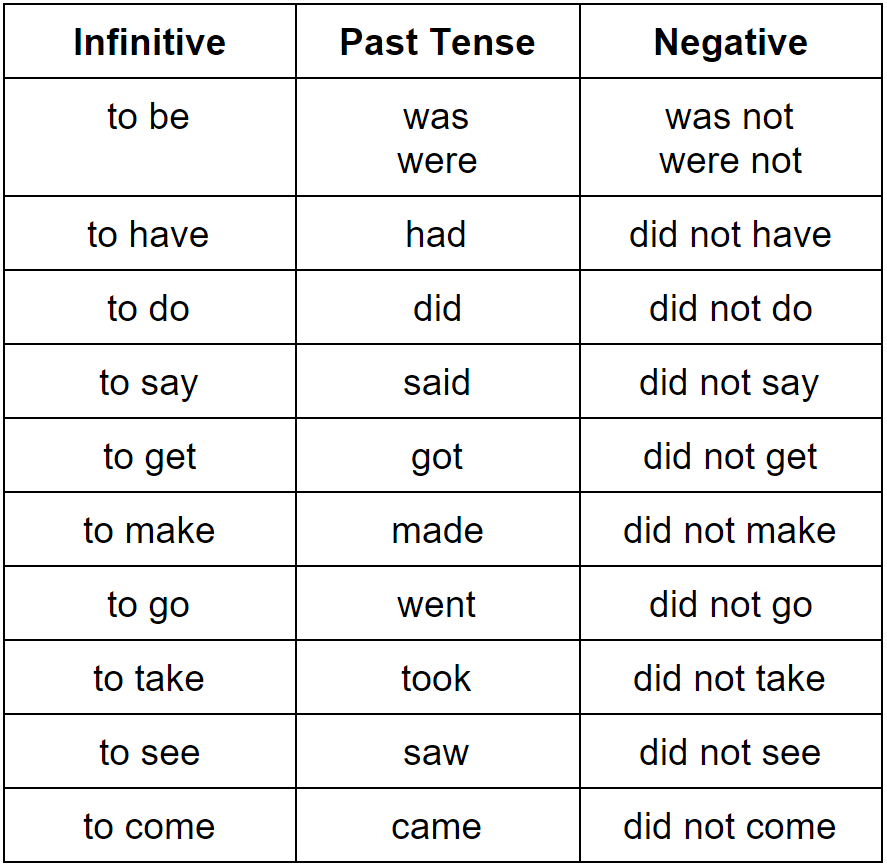
Simple Past Tense (Formula, Usage, Examples) PkDeveloper
The past tense for meet is met. The word is an irregular verb. Therefore, instead of adding "ed" at the end of the word to indicate the completed action, simply remove one letter, "E," in the middle (like breed past tense ). So, the correct past tense of meet in English is: met. Infinitive (base form) (V1) meet. Past simple (V2)

English Study Here
10.11.2020 The English verb 'meet' is pronounced as [mi:t]. Related to: irregular verbs. 3 forms of verb meet: Infinitive (meet), Past Simple - (met), Past Participle - (met). Here are the past tense forms of the verb meet 👉 Forms of verb meet in future and past simple and past participle. What is the past tense of meet.

Schatz Existieren meet met Innenstadt Wettbewerber geringer
The imperative mood is a grammatical mood that forms a command or request.. An example of a verb used in the imperative mood is the English phrase "Go." Such imperatives imply a second-person subject (you), but some other languages also have first- and third-person imperatives, with the meaning of "let's (do something)" or "let them (do something)" (the forms may alternatively be called.
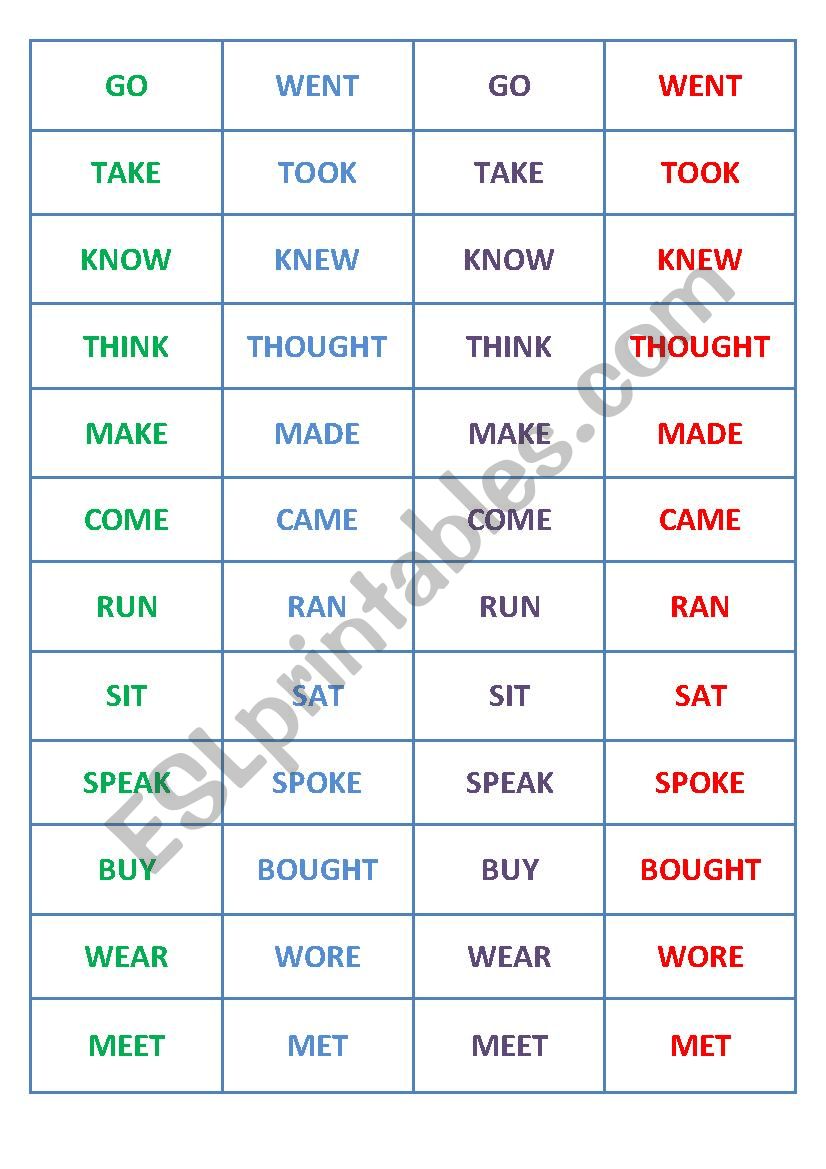
Past Tense Of Meet slidesharetrick
The V3 form is "met". met is used in the past or present perfect tense. + In the present perfect tense, we use the word meet as 'have + met' or 'has + met'. I, you, and we are used as 'have + met'. 'has + met' is used for he, she, and it. + If you need to use the past perfect tense, use 'had + met' regardless of the subject.
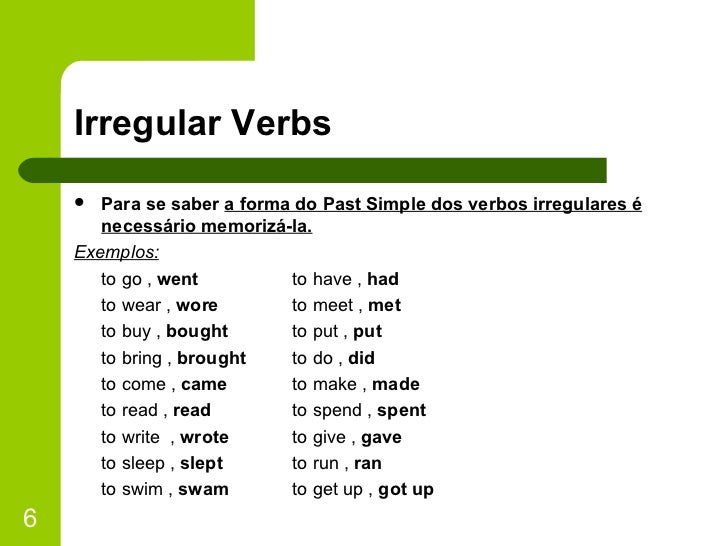
28+ Meet Verbo Irregular Gif Ofi
What is the past tense of the word "meet" The past tense (past participle) form of "meet" is "met." The infinitive of the word form is "meet." The present participle form is "meeting." The past tense form is "met" and past participle form is "met." Understanding verb tenses The general grammar rules that govern past tenses are as follows.
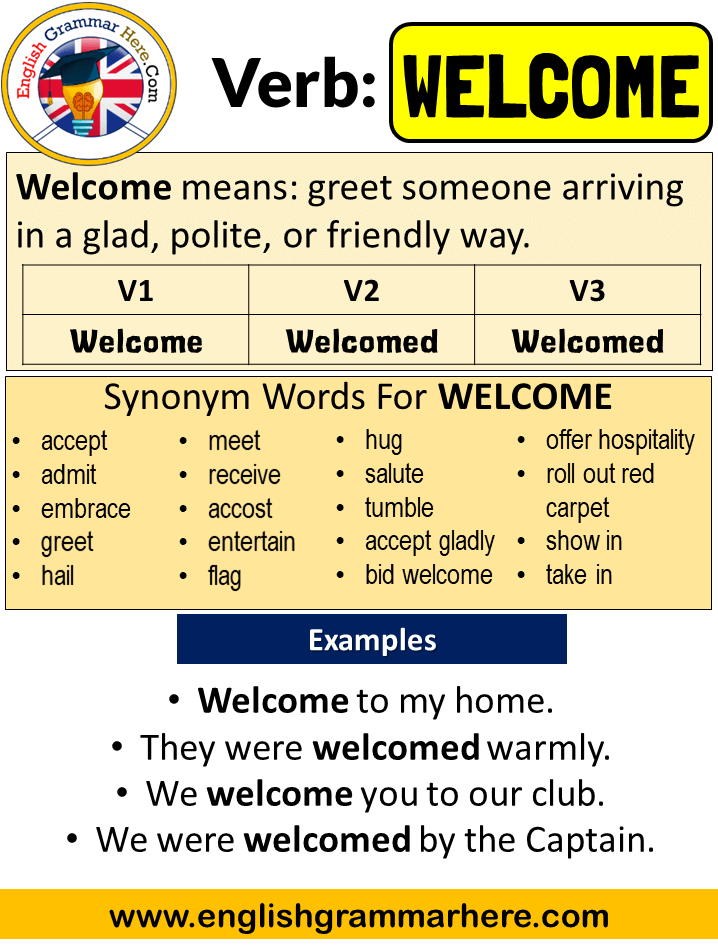
Meet Past Simple Simple Past Tense Of Meet Past
Conjugation of meet - WordReference.com verbs ending in -e: Firefox and Chrome users: install a shortcut ( Firefox or Chrome) then type "conj meet" in your address bar for the fastest conjugations. meet It is conjugated like: feed infinitive: present participle: past participle: (to) meet meeting met definition in Spanish in French in Italian

Meet Past Simple, Past Participle, V1 V2 V3 Form of Meet English Vocabs
Meet V1 V2 V3 V4 V5, Past Simple and Past Participle Form of Meet. When learning English you need to know the meaning of certain words first, and then sort the words appropriately according to grammatical rules. Verbs in a regular structure can be transformed with a simple rule, whereas in irregular verbs, this situation is slightly different.

Meet Past Simple, Simple Past Tense of Meet Past Participle, V1 V2 V3
The past tense of 'meet' is 'met.'. It's an irregular verb, which means that it doesn't follow the usual pattern of adding '-ed' to the base form of the verb. Instead, you simply remove the 'e' in the middle of the word. Here are some examples of how to use 'met' in the past tense: I met my friend for lunch yesterday.

Simple Past Meet Sinau
Conjugation of Meet Simple / Indefinite Present Tense He/She/It meets . I meet. You/We/They meet. Present Continuous Tense He/She/It is meeting. I am meeting. You/We/They are meeting. Present Perfect Tense He/She/It has met. I have met. You/We/They have met. Present Perfect Continuous Tense He/She/It has been meeting. I have been meeting.
Meet Simple Past Tense gicha web
to meet Preterite met Past participle met Model : meet Auxiliary : have, be Other forms: meet oneself / not meet Contractions Advertising Indicative Present I meet you meet he/she/it meets we meet you meet they meet Preterite I met you met he/she/it met we met you met they met Present continuous I am meeting you are meeting he/she/it is meeting

Meet past participle Archives EngDic
Grammar Reference Irregular Verbs List Definition: To Meet Irregular verb: To Meet Verb conjugation: Meet - Met - Met Meaning of 'To Meet' To make somebody's acquaintance To be in the same place as somebody Conjugation of verb 'Meet' Irregular Verbs Following a Similar Pattern Verbs like: UsingEnglish.com is partnering with Gymglish to give you a

Verbs Archives Page 96 of 100 English Study Here
The past simple and the past participle of meet. Conjugation of the verb meet: Base Form/Infinitive without 'to': meet. Past Simple: met. Past Partciple: met. Present Partciple: meeting. Third Person Singular: meets. Definition: 1. To see and talk to someone for the first time. 2. To come together with someone who you have arranged to see.
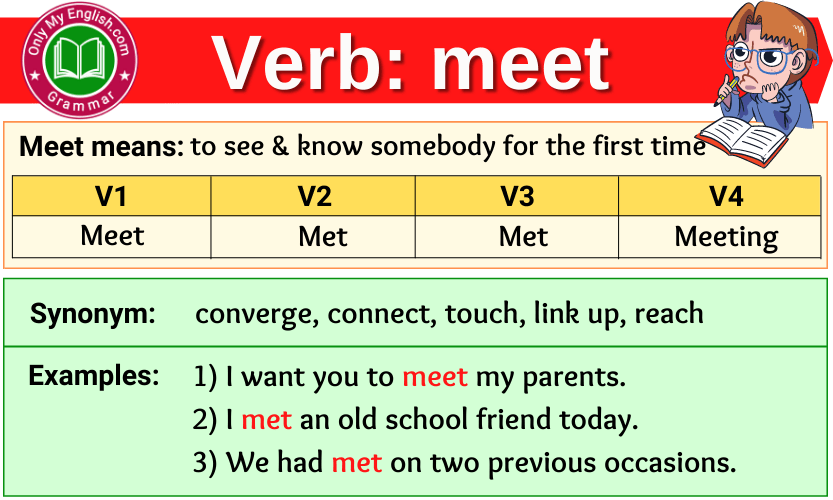
Meet Verb Forms Past Tense, Past Participle & V1V2V3 »
Meet: 2. Simple Past: Met: 3. Past Participle: Met: 4. Present Participle: Meeting: 5. 3rd Person Singular: Meets: Table of Contents. Meet past tense; Meet past participle; Meet verb forms V1 V2 V3 V4; Conjugation of Meet. More verb past tense; Meet past tense. Met: Met is the past tense of the word meet.

Meet Simple Past Tense IvanhasGraham
English Grammar Verbs Past tense Past simple Past simple Level: beginner With most verbs, the past tense is formed by adding -ed: called liked wanted worked But there are a lot of irregular past tense forms in English. Here are the most common irregular verbs in English, with their past tense forms: We use the past tense to talk about:
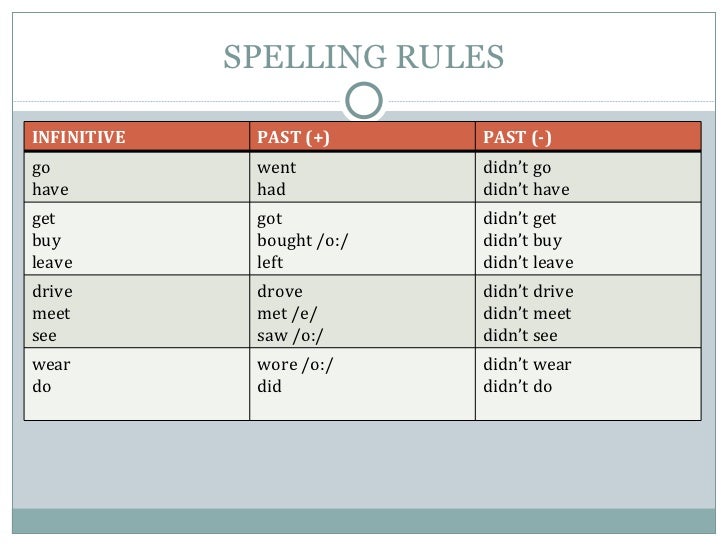
Past simple (iii)
Synonym Words For MEET clash contact face find greet see accost affront collide confront cross encounter engage experience front grapple hit light luck salute strike stumble tumble tussle Example Sentences with Meet, Met, Met V1 V2 V3 I met Samuel earlier this morning. I'm meeting Alex in five minutes. I don't think I've ever met this girl.
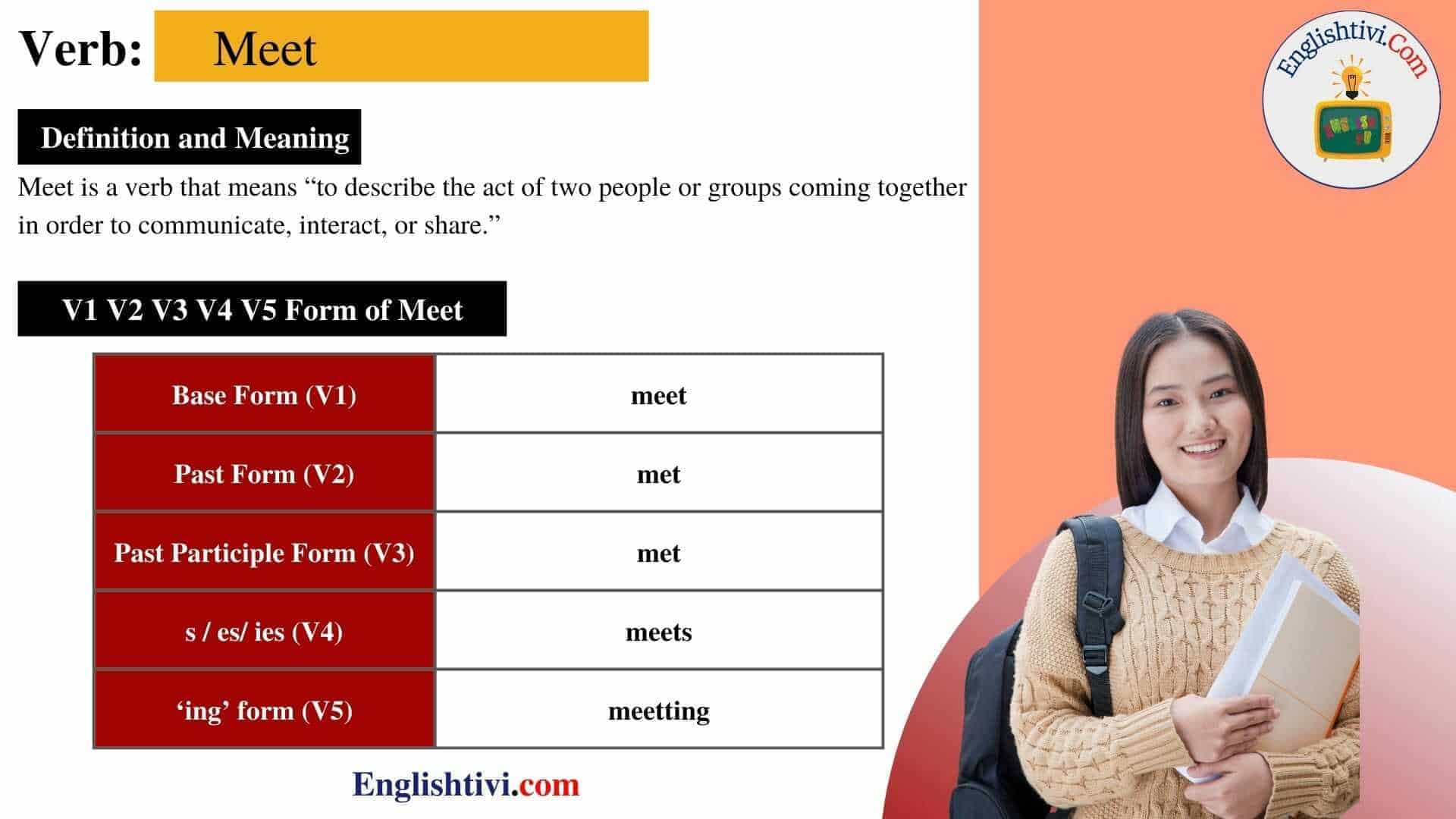
Meet V1 V2 V3 V4 V5 Base Form, Past Simple, Past Participle Form of
Simple past english met Past participle english met More information Full conjugation of "to meet" Translations for "to meet" Full conjugation of "to meet" Indicative Present I meet you meet he/she/it meets we meet you meet they